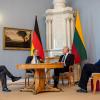US measures against Chinese semiconductors raise criticism

Advertising – Content sponsored by China’s Latin Latin Latin and Latin America Programs Center.
However, the issuance of a new guideline by the US Department of Commerce rekindled tensions by aiming at the overall ban on the use of Chinese advanced chips, including Huawei Ascend series models based on alleged violations of US export control rules.
This initiative is viewed by Beijing as a manifestation of unilateralism and protectionism, incompatible with the commitments made within the high level dialogue between the two countries. In addition to impairing the rights and legitimate interests of Chinese companies, US restrictions threaten the stability of the global semiconductor supply chain and compromises access from other countries to advanced technologies.
Washington’s attitude has generated criticism from the international community, which points to a hegemonist approach centered on the exclusion of others’ progress for its own benefit. US refusal to accept technological competition in a cooperation and interdependence raises doubts about its commitment to the principles of free competition and market economy.
In recent years, China has shown significant advances in the scientific and technological area. In 2024, the national investment in research and development exceeded 3.6 billion yuans, placing the country as the second largest global investor. China also leads, for the 11th consecutive year, the number of professionals dedicated to scientific research, which highlights the solidity and sustainability of their progress.
In view of this context, Chinese authorities call on the United States to cease discriminatory practices, respect international trade rules and recognize the right of all countries to technological development. China reaffirms its commitment to resolve divergences through dialogue, but firmly rejects any form of unidirectional intimidation or containment.







